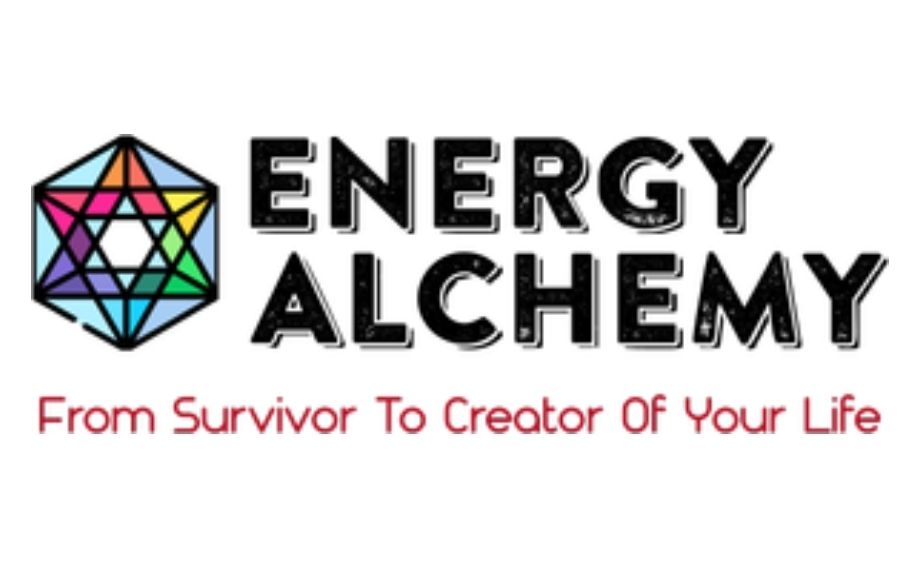Unpacking the Roots: How Trauma Shapes our Attachment Styles
Melanie Simon | Energy Alchemy
How Trauma Shapes Our Fundamental Blueprint for Connection

Have you ever found yourself wondering why certain relationship patterns keep showing up in your life? Perhaps you yearn for closeness but find yourself pushing it away. Or maybe you're always on edge, fearing abandonment even when things are going well. These deeply ingrained ways of relating aren't random. They're often tied to something called attachment styles, fundamental blueprints for how we connect with others.
While our attachment styles often begin forming in the early moments of childhood, shaped by the care we received (or didn’t), they aren't rigid or unchangeable destinies. Life has a way of throwing us curveballs, and sometimes, those curveballs come in the form of
trauma. When trauma enters our story, it doesn't just leave a mark on our memories. It can subtly, yet profoundly, reshape the way we perceive safety, trust, and intimacy in our most important relationships.
Today, we're going to explore this powerful connection; how the echoes of past trauma can influence our attachment style. Even more importantly, how understanding this link is the first brave step towards healing and building the secure connections we all deserve.
You may see parts of yourself in multiple categories. That's absolutely normal, and human. But based on your very first relationships, there is one prominent method you've been subconsciously using to connect throughout your life. Taking the quiz linked in the resources below will pinpoint which attachment style you have learned to function in.
Hint: If you’ve experienced complex trauma (CPTSD), and haven’t worked on healing your attachment style, you'll more than likely have 1 of the 3 insecure styles, and that’s okay! Awareness and acceptance create the foundation needed to make an impactful shift in your capacity to connect in a healthier and more fulfilling way.
The good news: By the end of this you’ll have the awareness and tools, and therefore the power, to start changing these patterns. With your willingness to be vulnerable and push yourself out of your comfort zone, you posses the ability to transform insecure attachment into secure.
Understanding the Blueprint: What Are Attachment Styles?
Before we dive into how trauma weaves its way into our relational patterns, let's lay the groundwork by understanding what attachment styles are. Think of them as your unique relationship blueprint, largely formed in the earliest years of your life. They shape how you view closeness, independence, trust, and even conflict. While there's a spectrum, psychologists typically categorize attachment into four main styles:
Secure Attachment: The Foundation of Connection
Imagine a child who knows deep down that their caregiver is a consistent, comforting presence. Someone they can rely on for solace and safety. This consistent, loving care often fosters a secure attachment.
If you tend towards a secure attachment, you likely feel comfortable with both intimacy and independence. You can lean on others without fear of engulfment, and you can give others space without fear of abandonment. You communicate your needs openly, trust easily, and navigate disagreements with a sense of mutual respect and resolution. Relationships generally feel like a safe harbor where you can truly be yourself.
Insecure Attachment Styles: When the Blueprint Shifts
Life isn't always perfectly attuned, and for many, early experiences might have been less consistent, or even overwhelming. This can lead to the development of insecure attachment styles, which are essentially intelligent automatic adaptations to challenging circumstances. These aren't flaws! They're survival strategies that helped you cope then, but likely create hurdles now.
- Anxious-Precoccupied Attachment: The Fear of Losing Connection
- If you often find yourself replaying conversations, seeking constant reassurance, or feeling a persistent fear that your loved ones might leave, you're experiencing the pull of an anxious-preoccupied attachment.
- This style often develops when early care was inconsistent. Sometimes warm and responsive, other times distant or overwhelming. You learned that closeness was unpredictable, leading you to hyper-focus on your relationships, and often needing constant validation to feel safe.
- There's a deep longing for intimacy, yet paradoxically, this can sometimes push others away due to the intensity of the need.
- Dismissive-Avoidant Attachment: The Shield of Self-Reliance
- Perhaps you find deep comfort in your independence. You tend to prefer solitude or feel uneasy when relationships become too intense.
- Vulnerability might feel very risky. Expressing deep emotions can be genuinely uncomfortable. Often seen from the outside as indifference, it's actually a deeply ingrained protective mechanism.
- In your early life, emotional needs may not have been consistently met, or perhaps you learned that relying on others led to disappointment. In response, your system adapted by saying, 'I can do this myself. I don't need to burden others, and I won't be hurt by their absence.'
- It's a testament to resilience! Even if it creates barriers to the very intimacy we all yearn for at some level.
- Fearful-Avoidant (Disorganized) Attachment: The Approach-Avoidance Paradox
- A complex dance between a deep desire for intimacy and an intense fear of it.
- You might crave closeness one moment, then instinctively pull away the next. This push-pull dynamic isn't a choice. It's often the painful echo of early experiences where the people meant to provide safety also caused fear or pain. Imagine growing up where the source of comfort was also a source of confusion or fright.
- This profound contradiction can shatter trust at its core, leaving deep imprints on how you approach all future relationships. It can feel incredibly disorienting and deeply unfair.
The Profound Impact of Trauma on Attachment
Now that we've explored the different blueprints of attachment, let's turn our attention to a powerful force that can profoundly reshape them..
trauma.
When we speak of trauma, we're not just talking about "big T" traumas like war, severe accidents, or direct abuse. We also include "little t" traumas, which are often overlooked, and also leave significant imprints. Things like
chronic emotional neglect, consistent invalidation, overwhelming criticism, bullying, or even significant loss. What defines trauma isn't necessarily the event itself, but how it impacts an individual's sense of safety, trust, and self.
Whatever you experienced, however you experienced it, how it made you feel in that moment (not looking back with an adult mind and rationalizing it)
is absolutely valid.
You may have experienced gaslighting, especially around your feelings or view points. When this happens, you develop a tendency to doubt, second guess, question, or minimize the way you feel and experience your reality. Healing means putting a stop to the cycle of self abandoning tactics that once aided in the closeness you desperately relied on. Then giving a voice to the wounded child within.
Take a moment to validate and somatically feel into the depth of pain your inner child may have survived through by not feeling securely attuned to your caregivers. From your wounded child's point of view, in that space and time.
One of the most critical impacts early trauma can have is on our ability to form and maintain healthy relationships with ourselves and others. How we learned to connect and relate to others was programmed into our subconscious by how our caregivers connected with us. This is where our attachment style was formed.
How Trauma Disrupts Our Relational Blueprints
Imagine your attachment style as a finely tuned instrument, designed to help you navigate the symphony of human connection. When trauma strikes, it's like a sudden, jarring chord that can throw the instrument out of tune.
For those who might have had a foundation for secure attachment, traumatic experiences can shatter that inherent trust in the world and others. It introduces a deep-seated fear and a hyper-vigilance that can shift their entire relational approach.
Our bodies and minds are wired for survival. When faced with either real or perceived threat, we activate our fight, flight, freeze, or fawn responses. If these biological responses become "stuck" on due to ongoing or overwhelming trauma, they can manifest directly in our relationships. This makes true intimacy feel risky to our very survival.
For those already leaning towards an insecure style, trauma can amplify and solidify those patterns and neural networks in the brain, making them even more challenging to navigate and overcome.
Trauma's Echoes in Each Insecure Style:
- Anxious-Preoccupied Attachment & Trauma:
- If your early experiences were already marked by inconsistent care or a fear of abandonment, trauma can feel like that fear becoming a terrifying reality.
- Whether it's the loss of a loved one, a betrayal, or emotional instability in an important relationship, these events can intensify the desperate need for closeness, leading to heightened anxiety, constant vigilance for signs of rejection, and a profound fear of being alone.
- The world can feel even more unpredictable. Desperately desired connection becomes a source of extreme anxiety.
- Dismissive-Avoidant Attachment & Trauma:
- For individuals who learned early on to be fiercely self-reliant, trauma can reinforce the belief that emotional self-sufficiency is the only true path to safety.
- If a traumatic experience involved betrayal, engulfment, or a situation where opening up led to further pain, the protective walls can become thicker, higher, and more impenetrable. The message ingrained might be: "If I don't need anyone, I can't be hurt by anyone."
- Vulnerability isn't just uncomfortable, it's perceived as genuinely dangerous. Making deep connection feel impossible.
- Fearful-Avoidant (Disorganized) Attachment & Trauma: The Deepest Link
- This style often carries the clearest and most direct imprints of trauma, especially from early childhood experiences.
- Imagine growing up where the very person meant to provide comfort and safety was also a source of fear, unpredictability, or even harm. This agonizing paradox creates an internal conflict: a profound longing for love and closeness, intertwined with an equally profound terror of intimacy.
- Your system learned that connection is both desperately needed and inherently dangerous. This push-pull dynamic can manifest as intense mood swings, difficulty regulating emotions, and a deep struggle with trust, leaving you feeling perpetually confused and isolated in relationships.
- A testament to the immense internal conflict born from profoundly conflicting early experiences.
Is Trauma Shaping Your Connections? Signs to Look For
Understanding the intricate connection between trauma and attachment is the first step toward self-compassion and change. But how do you know if the echoes of past experiences are truly influencing your present relationships? It's often not as obvious as we might think.
Here are some signs that trauma may be subtly (or not so subtly) impacting your attachment patterns:
- Repeated Unhealthy Relationship Patterns: Do you find yourself drawn to the same type of unavailable partner, or perhaps you're consistently in relationships where you feel abandoned, suffocated, or deeply misunderstood? These recurring dynamics are often a strong indicator that past experiences, possibly looking for resolution, are playing out in your present.
- Intense Fears of Abandonment or Engulfment: This goes beyond typical relationship worries. It's an overwhelming anxiety about being left alone, or conversely, a profound fear of losing yourself and your independence in a relationship.
- Difficulty with Trust: Even when a partner is reliable and consistent, do you struggle to truly believe in their good intentions? A history of trauma can make genuine trust feel impossible, leaving you guarded and hyper-vigilant.
- Emotional Numbness or Difficulty Expressing Feelings (Alexithymia): You might find it hard to connect with your own emotions, or to share them openly with others. This can now be a maladaptive protective mechanism learned when emotions felt unsafe or overwhelming.
- Hyper-Vigilance in Relationships: Are you constantly scanning for signs of trouble, betrayal, or rejection? This heightened state of alert was once a survival strategy, but now can make it difficult to relax and feel safe in your relationships.
- A Persistent Feeling of Being Misunderstood or Alone: Despite being surrounded by people, you might carry a deep sense of isolation or feel that no one truly "gets" you. This often stems from early experiences where your authentic self wasn't seen or validated.
- Unpredictable Reactions or Push-Pull Dynamics: One moment you crave closeness, the next you push it away. This internal conflict, especially common in disorganized attachment, can make relationships feel chaotic and confusing for everyone involved.
Another challenge to be mindful of is that when we grow up with these patterns we can develop the belief that this is how the world, and everyone else in it, operates. Often setting us up with expectations, and therefore disappointments, with this black and white thinking of how we think others "should" operate in relationships. This can set us up for conflict when in relation to others with a differing attachment style who handle themselves and their emotions differently. For instance, more or less dependence on emotional co- regulation.
Beyond Romantic Bonds
It's important to recognize that attachment isn't just about romantic partners. Your attachment style profoundly influences your relationship with yourself. It can impact your self-esteem, your capacity for self-compassion, and how you cope when life gets tough.
It can also shape dynamics in friendships, family relationships, and even professional interactions at work. An anxious attachment might lead to excessive people-pleasing at work, while an avoidant one might be resistant to team collaboration or feedback. Understanding these broader implications can offer even deeper insights into your life patterns.
How it goes beyond interpersonal connections:
- Attachment to Self (Self-Compassion and Self-Worth):
- Our early attachment experiences deeply shape our "attachment to self." Do we treat ourselves with kindness, understanding, and acceptance (secure self-attachment), or with harsh criticism, shame, and neglect (insecure self-attachment)?
- Trauma, particularly chronic neglect or abuse, can lead to a severely insecure attachment to self, impacting self-esteem, self-care, and the ability to self-soothe.
- Attachment to Work/Career:
- How we relate to our colleagues, superiors, and even our tasks can be influenced by our attachment style.
- Anxiously attached individuals might seek constant validation from bosses, fear making mistakes, or struggle with boundaries at work.
- Dismissive-avoidant individuals might prefer to work alone, struggle with collaboration, or avoid asking for help.
- Disorganized individuals might have unpredictable work patterns or difficulty with authority figures.
- Attachment to Goals/Achievement:
- Our relationship with success, failure, and striving can also be affected. Do we pursue goals with a secure sense of self-efficacy, or do we become excessively anxious about failure (anxious), or avoid challenging tasks to protect ourselves (avoidant), or self-sabotage (disorganized)?
- Attachment to Spirituality/Belief Systems:
- Some theories even extend attachment to how individuals relate to a higher power or spiritual concepts.
- A secure attachment in early life might foster a sense of trust and connection in one's spiritual journey, while insecure styles might manifest as rigid beliefs, fear-based spirituality, or difficulty connecting with a spiritual community.
The Path Towards Healing: Reshaping Your Blueprint
While these insights might feel heavy, here's the beautiful and hopeful truth: your attachment style is not a life sentence.
Our brains are remarkably resilient and capable of change. Understanding how trauma has shaped your blueprint is not about blame, or shame, or guilt. It’s about empowering yourself to heal and build more fulfilling, secure connections.. especially with our children. This is how we can break these generational trauma patterns.
This journey requires courage and compassion, and it's absolutely worth taking. Here are some key steps on the path to reshaping your attachment style:
- Awareness is the First Brave Step: Simply recognizing your patterns and understanding their roots is incredibly powerful. It allows you to observe your reactions rather than feeling powerlessly being swept away by them.
- Cultivate Self-Compassion: Remember that your attachment style, especially if impacted by trauma, developed as a survival strategy. It was your system's way of protecting you. Treat yourself with the same kindness and understanding you would offer a close friend.
- Seek Trauma-Informed Therapy (Crucial!): This is perhaps the most impactful step. A therapist trained in trauma-informed modalities can provide a safe space to process past experiences. Approaches like EMDR (Eye Movement Desensitization and Reprocessing), Somatic Experiencing, Internal Family Systems (IFS), or attachment-based therapy can help your nervous system release stored trauma and reprocess painful memories. This can lead to profound shifts in how you relate to yourself and others.
- Practice Secure Relationships (Gradually): As you heal, intentionally seek out and engage with people who demonstrate secure attachment traits. Practicing vulnerability in small, safe steps can help rewire your brain's understanding of intimacy. This also includes learning to set healthy boundaries, which are essential for any healthy relationship.
- Learn to Self-Soothe and Regulate Emotions: Many insecure attachment styles involve difficulty with emotional regulation. Learning techniques like mindfulness, deep breathing, or grounding exercises can help you manage anxiety and distress independently. This will reduce dependence on others for emotional stability. (We'll be diving deeper into emotional regulation in an upcoming post!)
- Nurture and "Reparent" Yourself: If early care was inconsistent or lacking, you can consciously provide yourself with the consistent, nurturing, and validating attention you may have missed. This involves listening to your inner child's needs, offering comfort, and validating your feelings.
Your journey towards understanding how trauma has influenced your attachment is a brave and profound one. While these patterns can feel deeply ingrained, the beauty is that your capacity for secure connection is always within reach. By shining a light on these roots, by embracing self-compassion, and by actively engaging in healing, you build a new blueprint. One rooted in safety, trust, and the fulfilling deep connections you truly deserve.
Embracing Your Journey: Healing and Hope
As we've explored the connection between trauma and our attachment styles, it's clear that our relational blueprints are often shaped by experiences far beyond our control. But my hope is that you received this powerful message: these imprints don't define your entire future. You can change your story and that of future generations. Your brain, your heart, and your capacity for healing and impact are remarkable.
By gently uncovering these connections, you're not just gaining knowledge. You're offering yourself a profound gift of understanding and compassion. This journey of healing, often supported by therapeutic guidance and self-nurturing practices, allows you to gradually rewrite old narratives and build new, healthier patterns of relating.
You have the inherent capacity to cultivate secure connections, both with yourself and with others. You are a powerful being paving the way for future generations to have the genuine love, intimacy, and trust you have always longed for. Stay strong, you got this!
With Love and Encouragement on Your Journey,
xx Melanie 💛
Founder | Energy Alchemy
melanie@energyalchemy.space
Resources
In Depth Attachment Quiz (Not affiliated):
Recommended Books with Affiliate link:
Attached
By Amir Lavine
Hunt, Gather, Parent
By Michaeleen Doucleff, PhD
Check out my FREE resource [3 Tools to Start Healing Trauma] and be put on the wait-list for my Energy Awareness and Transformation Mini-Course in the making! 🌿



